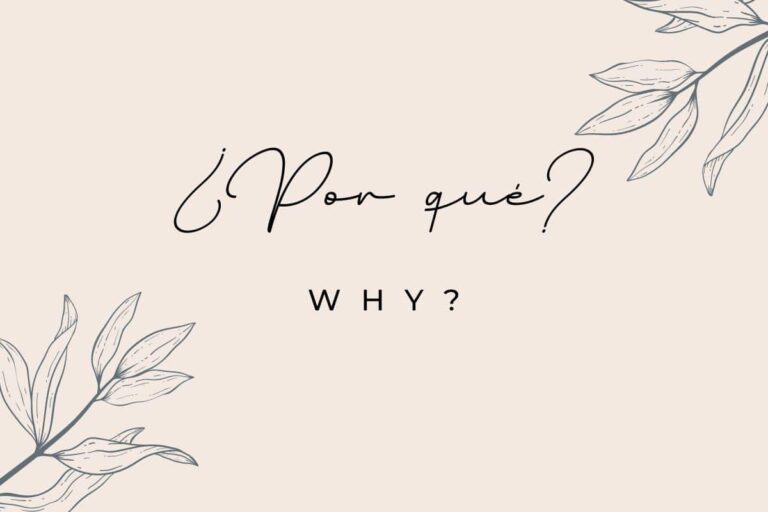Four Ways to Say And in Korean — Formal, Casual, and the Rest
Conjunctions — words like “and”, “but”, and so on — are among the hardest to translate. They rarely have one-to-one translations.
But even though we advocate for thinking in sentences, we still find it useful to provide equivalents in clusters. Sometimes you just want to know how to say “and”! That’s why we’re writing this introduction on how to say “and” in Korean.
There are lots of different ways in which we use “and” in English. Loosely, it can be grouped into the following three categories:
- Joining two sentence fragments together (“I went to the cinema and watched two movies in a row”)”
- Grouping two verbs (“I drank and ate as much as I could to get as much value as possible”) or nouns (“I bought apples, firecrackers, and an iPad”)
- Expressions, like saying “I’m fine thanks, and you?” — we haven’t included these here, as they’re more “set phrases” that you should learn separately.
Aside from the above English language expressions, there are also ways of using the words in this article that don’t translate directly to “and” in English. For example, many of the words that mean “and” in Korean are often used in comparison expressions. When you compare two things in Korean, you use an expression like “that and this, are they different?” or “that and this are similar”.
So, bear in mind you should learn the following conjunctions in context, using the example sentences below, and sentences you build yourself.
Here is a collection of the most common ways in which to translate “and” in Korean.
You might also like…
Contents
And in Korean — Summary Table
Here’s a summary table of all the main ways of saying “and” in Korean. I’ve included some example sentences of using the main ways of saying it.
Below there is more explanation with examples.
| And in Korean | Explanation | Example(s) |
|---|---|---|
| 하고 고 | Standard use in spoken Korean; slightly more formal Links two actions, or two objects. | We want to eat ramen and tteokbokki. 우리는 라면하고 떡볶이 먹고 싶은데요. |
| 와 (after vowel) 과 (after consonant) | More bookish (texts, presentations etc) Basically, equivalent to 하고, Most common for linking two objects. | I have good news and bad news. 좋은 소식과 나쁜 소식이 있습니다. |
| 랑 (after vowel) 이랑 (after consonant) | Most common casual spoken use | I had lunch with my girlfriend. 나는 여자 친구랑 점심을 먹었어요. |
| 그리고 | Linking nouns, linking sentences | I want to eat kimchi, rice and meat 저는 김치, 밥 그리고 고기를 먹고 싶어요 |
See below for more explanation and examples
하고 and 고 — The Most Common Form of “And” in Korean
By far the most common form of “and” in Korean in spoken form is 하고 and 고.
This word serves as both and and and then, i.e. linking two temporally sequenced activities. I mean two things that come one after the other.
A few notes on using this form of “and” in Korean:
- 하고/고 is used in spoken communication, but it can also be written. It’s neither too formal nor too casual in most situations.
- You can use either one, but 하고 is often shortened to 고.
- You can add 하고 to the end of a list (like a final comma), unlike 와/과.
A few examples are below.
| English | Korean | Pronunciation |
|---|---|---|
| This bag is cheap and pretty | 이 가방이 싸고 예뻐요. | i gabang-i ssago yeppeoyo. |
| My older brother is good at singing and I am good at sports | 형은 노래를 잘하고 저는 운동을 잘해요. | hyeong-eun nolaeleul jalhago jeoneun undong-eul jalhaeyo. |
| I ate lunch and then I watched TV. | 점심을 먹고 텔레비전을 봤어요. | jeomsim-eul meoggo tellebijeon-eul bwass-eoyo. |
| Computers and televisions are expensive. | 컴퓨터하고 텔레비전이 비싸요. | keompyuteohago tellebijeon-i bissayo. |
| I will do my homework and then I’ll drink coffee. | 숙제를 할하고 커피를 마실 거예요. | sugjeleul halhago keopileul masil geoyeyo. |
| In winter it shows a lot and is cold. | 겨울에 눈이 많이 오고 추워요. | gyeoul-e nun-i manh-i ogo chuwoyo. |
| Our house is big and pretty. | 우리 집이 크고 예뻐요. | uli jib-i keugo yeppeoyo. |
| I study Korean and my younger brother is studying English. | 저는 한국어를 공부하고 제 동생은 영어를 공부해요. | jeoneun hangug-eoleul gongbuhago je dongsaeng-eun yeong-eoleul gongbuhaeyo. |
그리고 – Linking sentences
그리고 (geurigo) has the meaning of “and” or “and then”, depending on the context.
It’s actually an adaptation of 하고. It’s like 하고, but expressed as an afterthought when a phrase is finished, like saying “Following on from that, and…”
그리고 is used both for linking nouns and phrases, but in colloquial situations, 그리고 is more commonly used for linking phrases.
For example, “I like to eat sandwiches for lunch. And sometimes I also like pizza.” translates to “저는 점심으로 샌드위치를 먹는 것을 좋아해요. 그리고 때때로 피자를 먹는 것을도 좋아해요.”
| English | Korean | Pronunciation |
|---|---|---|
| This bag is cheap and pretty. | 이 가방이 싸요. 그리고 예뻐요. | i gabang-i ssayo. geuligo yeppeoyo. |
| I will exercise, and then I’ll read a book. | 운동할 거예요. 그리고 책을 읽을 거예요. | undonghal geoyeyo. geuligo chaeg-eul ilg-eul geoyeyo. |
| I like kimbab. And I like teokboki, too. | 저는 김밥을 좋아해요. 그리고 떡볶이도 좋아요. | jeoneun gimbab-eul joh-ahaeyo. geuligo tteogbokk-ido joh-ayo. |
| I met a friend and then I ate food. | 친구를 만났어요. 그리고 밥을 먹었어요. | chinguleul mannass-eoyo. geuligo bab-eul meog-eoss-eoyo. |
| I need a notebook, a pencil and eraser. | 저는 공책, 연필, 그리고 지우개가 필요해요. | jeoneun gongchaeg, yeonpil, geuligo jiugaega pil-yohaeyo. |
(이)랑 — The most casual
The most casual way of saying “and” in Korean is 랑. It’s not informal, per se; but it is mostly spoken.
랑 is often used in place of “with” in English. It can even be translated as “like” or “as”, e.g. comparing two things. In fact, 랑 has so many translations that it’s a perfect example of how you can’t translate languages word-for-word (when the languages are quite different) and must instead learn just how to use complete sentences.
Usage guidelines for 랑:
- You can attach (이)랑 to the final object in a list (unlike 와/과).
- You use 이랑 after a consonant and 이랑 after a vowel.
| English | Korean | Pronunciation |
|---|---|---|
| I’ll eat ramyeon and kimchi. | 저는 라면이랑 김치 랑 먹을 거예요. | jeoneun lamyeon-ilang gimchilang meog-eul geoyeyo. |
| I like to chit-chat with friends. | 저는 친구 랑 수다떠는 것을 좋아해요. | jeoneun chingulang sudatteoneun geos-eul joh-ahaeyo. |
| Who are you going with? | 누구 랑 같이 갈 거예요? | nugulang gat-i gal geoyeyo? |
| I spent time with my family. | 가족이랑 시간을 보냈어요 | gajog-ilang sigan-eul bonaess-eoyo. |
| Life is the same as before. | 생활은 예전이랑 똑 같아요. | saenghwal-eun yejeon-ilang ttog gat-ayo. |
| I ate eggs and bread. | 계란이랑 빵을 먹었어요. | gyelan-ilang ppang-eul meog-eoss-eoyo. |
와/과 — The more formal, written one
Finally, 와/과 is the most formal way of writing “and” in Korean.
It’s mostly used in writing, or in professional settings like presentations or the news. It’s a bit awkward to use 와/과 in spoken Korean.
Unlike other forms of “and”, you can’t use 와/과 at the end of a sequence of objects.
Similar to other forms of “and” in Korean, 와/과 has multiple uses and translations. The translations that have the most variety are when it’s used in a comparison, like in the second example below (“English is different from Korean”).
| English | Korean | Pronunciation |
|---|---|---|
| I’ll have to discuss it with my colleague. | 동료와 의논해 봐야겠어요. | donglyowa uinonhae bwayagess-eoyo. |
| English is different from Korean. | 영어는 한국어와 달라요. | yeong-eoneun hangug-eowa dallayo. |
| She like strawberries and watermelon. | 그녀는 딸기와 수박을 좋아해요. | geunyeoneun ttalgiwa subag-eul joh-ahaeyo. |
| The situation is the same as yesterday. | 상황은 어제와 동일합니다. | sanghwang-eun eojewa gatseubnida. |
| I’m thinking of watching a movie with my friends. | 친구들과 영화나 볼까 해요. | chingudeulgwa yeonghwana bolkka haeyo. |
| Please write your name and phone number here. | 여기에 이름과 전화번호를 쓰세요. | yeogie ileumgwa jeonhwabeonholeul sseuseyo. |
Wrap up — Other Resources
Generally, I believe that the best way to learn any language — including learning Korean — is to learn it via sentences, not translating words. That’s why I have so many example sentences for “and” in Korean above.
The main places I like to get example sentences from are textbooks (which I have in our Korean Resources page) and a couple of online apps like Glossika and Speechling.
And don’t just consume the sentences above. You have to make your own! Take the sentences and modify a noun or two and see if you can figure out how to say “and” in Korean in sentences that match what you do in everyday life.






